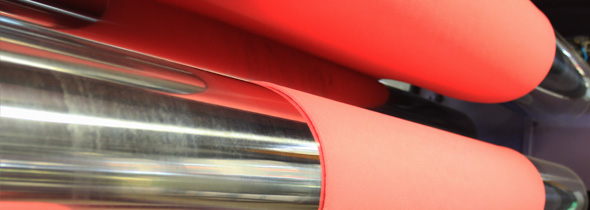When it comes to selecting materials that stand the test of time, chemically cross-linked foam is a game changer. You might be wondering, what makes this foam so special? Well, let me break it down for you. This type of foam is crafted through a unique chemical process that enhances its structure, resulting in a product that is not only durable but also incredibly versatile. Imagine a material that can withstand harsh weather conditions, resist wear and tear, and still maintain its shape—sounds like a superhero of materials, right?
But wait, there’s more! The applications of chemically cross-linked foam are as diverse as they come. From the automotive industry, where it provides excellent insulation and cushioning, to construction, where it’s used for soundproofing and thermal insulation, this foam is everywhere. It’s like the Swiss Army knife of materials, ready to tackle any challenge thrown its way.
Now, let’s talk about cost-effectiveness. Investing in chemically cross-linked foam means less frequent replacements and lower maintenance costs. This translates to significant savings over time, making it a smart choice for both consumers and businesses. In a world where every penny counts, why settle for less when you can have a material that offers so much more?
Understanding Chemically Cross-Linked Foam
Chemically cross-linked foam is a remarkable material that has gained traction in various industries due to its unique properties and advantages over traditional foam. But what exactly is it? Essentially, this foam is created through a process where polymer chains are chemically bonded together, resulting in a structure that is both robust and resilient. This process not only enhances its strength but also improves its resistance to moisture, chemicals, and temperature fluctuations.

The production of chemically cross-linked foam involves a careful blend of raw materials that undergo a chemical reaction during the foaming process. This reaction creates a three-dimensional network of interconnected cells, giving the foam its characteristic durability. Unlike conventional foams, which can easily degrade or lose shape over time, chemically cross-linked foam maintains its integrity, making it a superior choice for demanding applications.
One of the standout features of this foam is its versatility. It can be tailored to meet specific requirements, whether you’re looking for a softer feel for comfort or a firmer structure for support. Its adaptability makes it suitable for a range of uses, from cushioning in automotive seats to insulation in construction projects. In short, investing in chemically cross-linked foam means opting for a material that not only performs exceptionally well but also stands the test of time.
Applications of Chemically Cross-Linked Foam
Chemically cross-linked foam is a game changer across various industries, showcasing its versatility and unmatched performance. From the bustling automotive sector to the sturdy construction sites, this foam type proves to be an essential material. Imagine the peace of mind knowing that your vehicle’s interior is cushioned with a material that can withstand wear and tear while maintaining its shape! The automotive industry utilizes this foam not just for comfort, but also for its soundproofing capabilities, making rides quieter and more enjoyable.

In construction, chemically cross-linked foam is often used for insulation. It acts as a barrier against moisture and air infiltration, helping to maintain comfortable indoor temperatures and reduce energy costs. This foam is like a warm blanket, wrapping buildings in a protective layer that enhances energy efficiency. Moreover, its lightweight nature makes it easy to handle and install, saving time and labor costs.
Additionally, the packaging industry has embraced chemically cross-linked foam due to its protective qualities. It effectively absorbs shocks, ensuring that delicate items arrive at their destination unscathed. Whether it’s electronics or fragile glassware, this foam acts like a guardian angel, safeguarding products during transit.
In summary, the applications of chemically cross-linked foam are as diverse as they are impactful. Its ability to adapt and perform in various environments makes it a valuable asset in today’s market.
Cost-Effectiveness and Longevity
When it comes to making smart investments, chemically cross-linked foam stands out as a champion in both cost-effectiveness and longevity. Imagine this: you purchase a product that not only meets your immediate needs but also continues to perform exceptionally well over the years. That’s the magic of chemically cross-linked foam! Its unique structure allows it to withstand wear and tear far better than traditional foam materials, which often degrade quickly, leading to frequent replacements.
polyethylene foam => https://www.durfoam.com/en/durpack/3/3/5
pe foam => https://www.durfoam.com/en/durpack/3/3/5
physically cross linked polyethylene foam => https://www.durfoam.com/en/durprox/1/3/5
One of the most appealing aspects of this foam is its low maintenance requirements. Unlike other materials that may require constant upkeep or replacement, chemically cross-linked foam is designed to endure. This means that businesses and consumers alike can save a significant amount of money in the long run. Just think about it—fewer replacements and repairs translate to more cash in your pocket!
In summary, choosing chemically cross-linked foam is not just a purchase; it’s a strategic investment that pays off with durability and long-term savings. Why settle for less when you can have a product that truly delivers?








